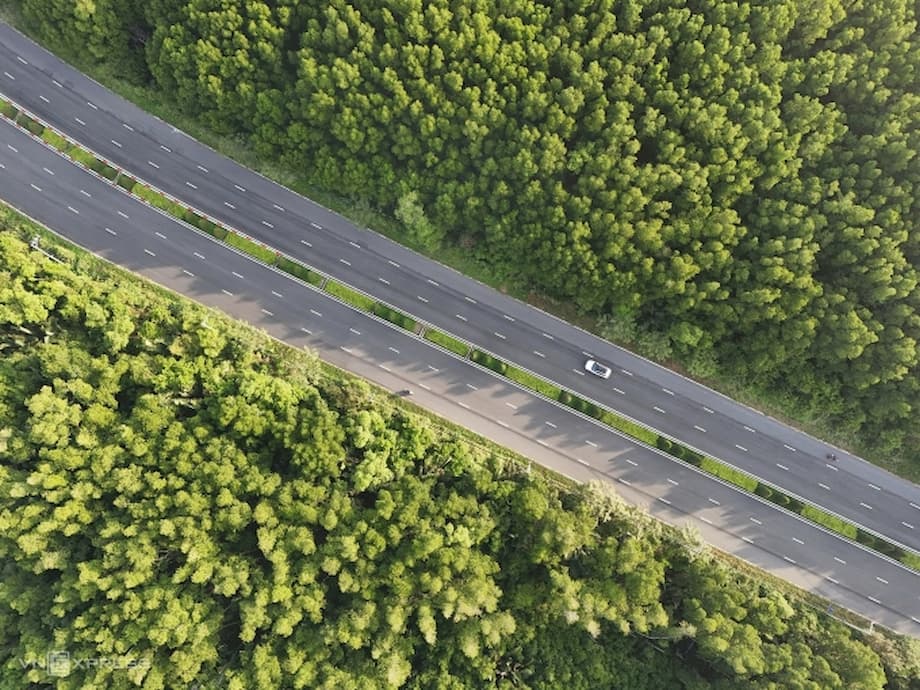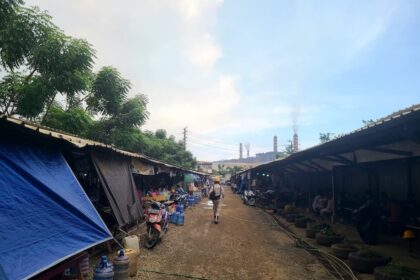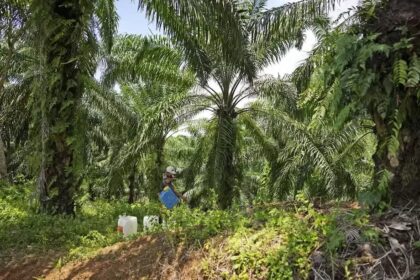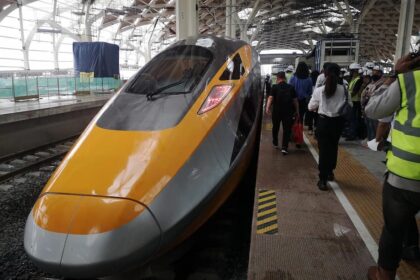Can Gio’s Ambitious Push for Electric Mobility
In a landmark move that could set a precedent for sustainable urban development in Vietnam, authorities in Can Gio District—home to Ho Chi Minh City’s (HCMC) sprawling mangrove forests—have proposed a 100% subsidy for residents to replace gasoline motorbikes with electric ones. This initiative, if approved, would make Can Gio the first district in HCMC to fully fund the transition to electric two-wheelers, with costs covered by the local government and private businesses.
- Can Gio’s Ambitious Push for Electric Mobility
- Why Can Gio? The Unique Context of Vietnam’s Biosphere Reserve
- Details of the Proposed Subsidy Program
- HCMC’s Broader Electric Vehicle Transition Strategy
- Challenges and Opportunities in the Transition
- Stakeholder Perspectives: Government, Business, and Residents
- Lessons from Other Cities and the Global Context
- What’s Next for Can Gio and HCMC?
- In Summary
The proposal, announced by Can Gio deputy chairman Ho Van Binh at a recent conference, is part of a broader vision to transform the district into a net-zero urban area. The plan aligns with HCMC’s strategy to develop green marine economies, promote eco-tourism, and protect the environment, all while addressing the economic realities faced by local residents.
Why Can Gio? The Unique Context of Vietnam’s Biosphere Reserve
Located about 50 kilometers southeast of HCMC’s bustling downtown, Can Gio spans over 70,000 hectares, half of which are covered by mangroves and protective forests. The district is not only a vital ecological zone but also a UNESCO-recognized World Biosphere Reserve, celebrated for its restored mangrove ecosystem after the devastation of the Vietnam War.
With a population of just over 70,000, Can Gio is relatively small compared to other HCMC districts. Yet, it is home to approximately 33,000 motorbikes and nearly 1,000 cars—a significant number given the area’s environmental sensitivity. The district’s future is also being shaped by major investments, including a $9-billion urban property project by Vingroup and plans for a high-speed metro line to connect Can Gio with the city center.
Socioeconomic Challenges and the Need for Support
One of the driving forces behind the subsidy proposal is the socioeconomic profile of Can Gio’s residents. According to local officials, about 22% of the population is classified as near poor. Many are expected to face reduced incomes during the construction phase of the new urban development projects. For these families, the cost of transitioning from gasoline-powered to electric motorbikes could be prohibitive without substantial support.
Deputy chairman Ho Van Binh emphasized the importance of alleviating this financial burden, stating that a full subsidy would ensure equitable access to clean transportation and prevent low-income residents from being left behind in the city’s green transition.
Details of the Proposed Subsidy Program
The Can Gio subsidy plan envisions a comprehensive package to help residents trade in their gasoline motorbikes for electric alternatives. The costs would be shared between the local government and private sector partners, notably Vingroup, which has already announced a series of incentives for electric vehicle (EV) adoption in HCMC.
Vingroup’s subsidiary, VinFast, is offering to pay the full registration fee for electric bike customers in HCMC from August 1 to October 31. Additional incentives include:
- A 3% reduction in interest rates for electric car loans over three years
- A 10% discount on electric motorbike prices, with a 10% reduction in loan interest rates for three years
- Free battery charging at V-Green public charging stations
These measures are designed to make electric vehicles more accessible and affordable, especially for low-income households.
How the Program Would Work
While the full operational details are still being finalized, the core idea is to provide residents with a direct subsidy covering the entire cost difference between their existing gasoline motorbike and a new electric model. The program would likely include:
- Buyback or trade-in schemes for old gasoline bikes
- Direct financial support or vouchers for purchasing electric bikes
- Access to low-interest loans for those who need additional financing
- Waivers for registration and other administrative fees
Such a comprehensive approach aims to remove both financial and logistical barriers to EV adoption.
HCMC’s Broader Electric Vehicle Transition Strategy
The Can Gio initiative is not happening in isolation. It is part of a much larger push by HCMC to reduce vehicle emissions and modernize urban transportation. The city has unveiled an ambitious plan to replace 400,000 gasoline motorbikes with electric vehicles by 2028, focusing initially on ride-hailing and delivery drivers.
Under the draft proposal by the Ho Chi Minh City Institute for Development Studies, only electric motorbikes will be allowed to register for ride-hailing and delivery platforms from 2026. The transition will be phased, with 30% conversion targeted by the end of 2026, 80% by 2027, and a complete switch by 2028. After 2029, gasoline motorbikes will be banned from these platforms entirely.
Low-Emission Zones and Emission Control Measures
HCMC also plans to establish low-emission zones, where gasoline vehicles will be restricted during peak hours starting in 2027 and banned entirely from 2028. Can Gio is set to be one of the city’s first low-emission zones, given its ecological significance and the ongoing urban development projects.
These efforts are part of a broader emissions control program in response to national directives on urgent environmental protection. The city aims to offset the costs of subsidies and tax breaks through revenues from carbon credit trading, making the transition financially sustainable in the long run.
Challenges and Opportunities in the Transition
While the vision is bold, the transition to electric mobility in Can Gio and HCMC faces several challenges. Chief among them is the development of adequate charging infrastructure. As of mid-2025, HCMC had only about 50 battery-swapping stations, with more expected as new companies enter the market. The city is working to map out potential charging points and encourage investment in both fixed and mobile charging solutions.
Another concern is ensuring the safety of EV use in rental housing areas, where electrical standards and fire prevention measures may not be up to par. Authorities plan to step up inspections and provide guidance to landlords and tenants to address these risks.
Economic and Environmental Impacts
The environmental benefits of switching to electric motorbikes are significant. Motorbikes are responsible for 90% of vehicle-related emissions in HCMC, contributing to poor air quality and public health risks. The city estimates that emission control measures could cut over 56,000 tons of carbon monoxide and 4,400 tons of hydrocarbons annually.
Economically, the transition could spur new industries and job opportunities in EV manufacturing, maintenance, and charging infrastructure. However, it also requires careful management to ensure that low-income residents are not disproportionately affected by the costs or disruptions associated with the shift.
Stakeholder Perspectives: Government, Business, and Residents
The success of the Can Gio subsidy program will depend on close collaboration between government agencies, private companies, and local communities. At the recent conference, a representative from Vingroup highlighted the company’s commitment to supporting the transition, noting that:
“We have proposed to HCMC many policies to support locals transition to electric vehicles, including financial incentives and infrastructure investments.”
Local officials, meanwhile, stress the importance of ensuring that the benefits of green development are shared equitably. Deputy chairman Ho Van Binh stated:
“A full payout to help locals transition from gasoline-powered motorbikes to electric ones will alleviate their financial burden, especially as many are set to see their income reduced amid the construction of the new urban project.”
For residents, the transition represents both an opportunity and a challenge. While electric bikes promise lower operating costs and cleaner air, concerns remain about the reliability of new technology, the availability of charging stations, and the potential loss of income during the urban redevelopment process.
Lessons from Other Cities and the Global Context
Can Gio’s approach is part of a growing global trend toward using public and private funds to accelerate the adoption of clean transportation. Cities around the world are experimenting with subsidies, tax breaks, and infrastructure investments to encourage residents to switch to electric vehicles.
For example, in Europe, cities like Paris and London have introduced low-emission zones, while governments in China and India have rolled out large-scale EV subsidy programs. These efforts have shown that financial incentives, combined with robust infrastructure and public education, can dramatically speed up the transition to cleaner mobility.
Vietnam’s own experience with vehicle emissions control dates back to 2010, but implementation has been slow due to legal and logistical hurdles. The new comprehensive approach in HCMC, starting with Can Gio, could serve as a model for other regions in the country.
What’s Next for Can Gio and HCMC?
The Can Gio electric bike subsidy proposal is still awaiting final approval and detailed implementation guidelines. If successful, it could pave the way for similar programs across HCMC and other Vietnamese cities. The district’s unique combination of ecological importance, socioeconomic challenges, and major urban development projects makes it a critical test case for Vietnam’s green transition.
As HCMC continues to expand and modernize, balancing economic growth with environmental protection will remain a central challenge. The Can Gio initiative demonstrates that bold, inclusive policies—backed by strong public-private partnerships—can help cities chart a more sustainable and equitable future.
In Summary
- Can Gio District has proposed a 100% subsidy for residents to switch from gasoline to electric motorbikes, aiming to become HCMC’s first net-zero urban area.
- The plan targets over 33,000 motorbikes and is designed to support low-income residents, with costs shared by the government and private sector.
- Vingroup and its subsidiaries are offering additional incentives, including discounts, loan interest reductions, and free charging.
- The initiative is part of HCMC’s broader strategy to replace 400,000 gasoline motorbikes with EVs by 2028 and establish low-emission zones.
- Challenges include developing charging infrastructure and ensuring equitable access, but the program could serve as a model for sustainable urban development in Vietnam.












